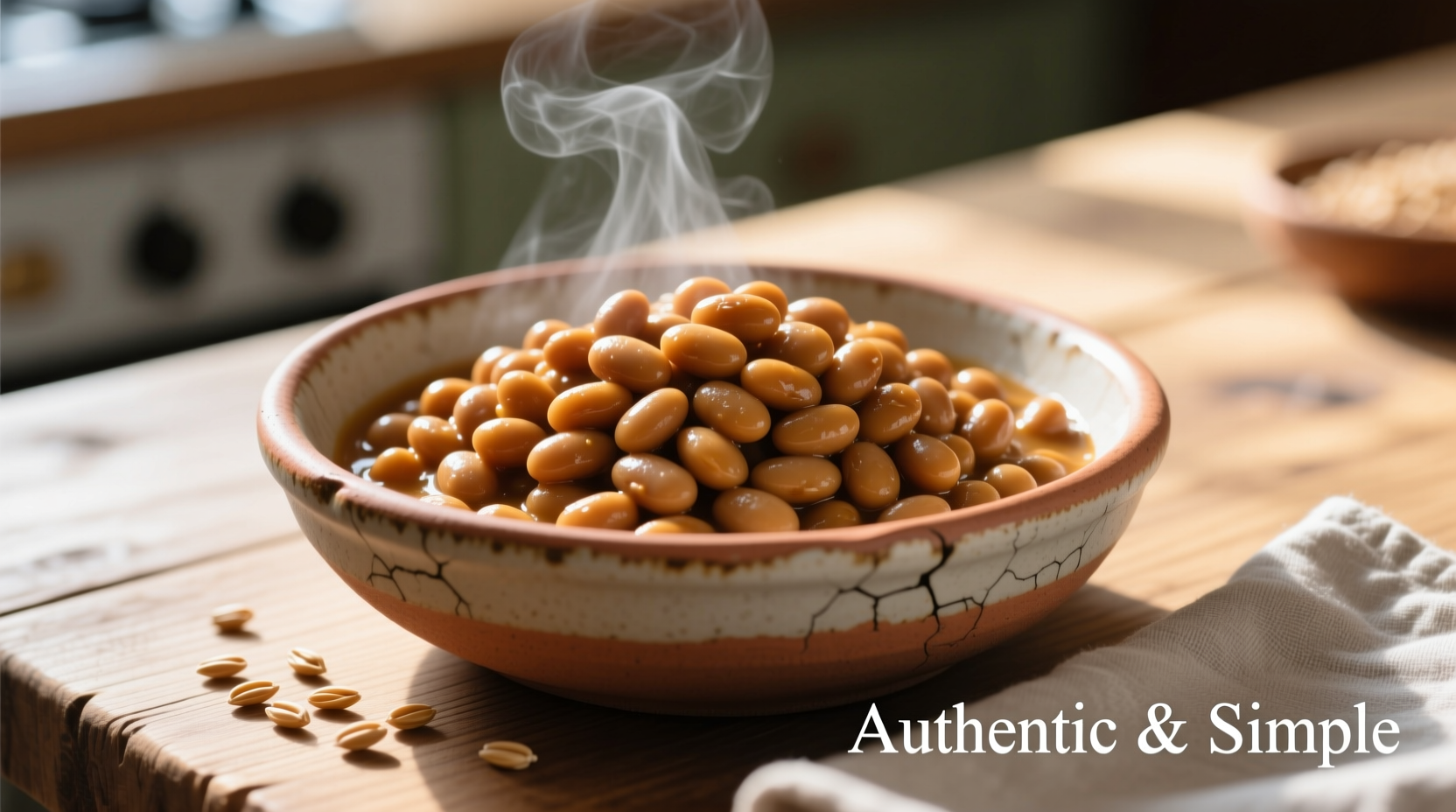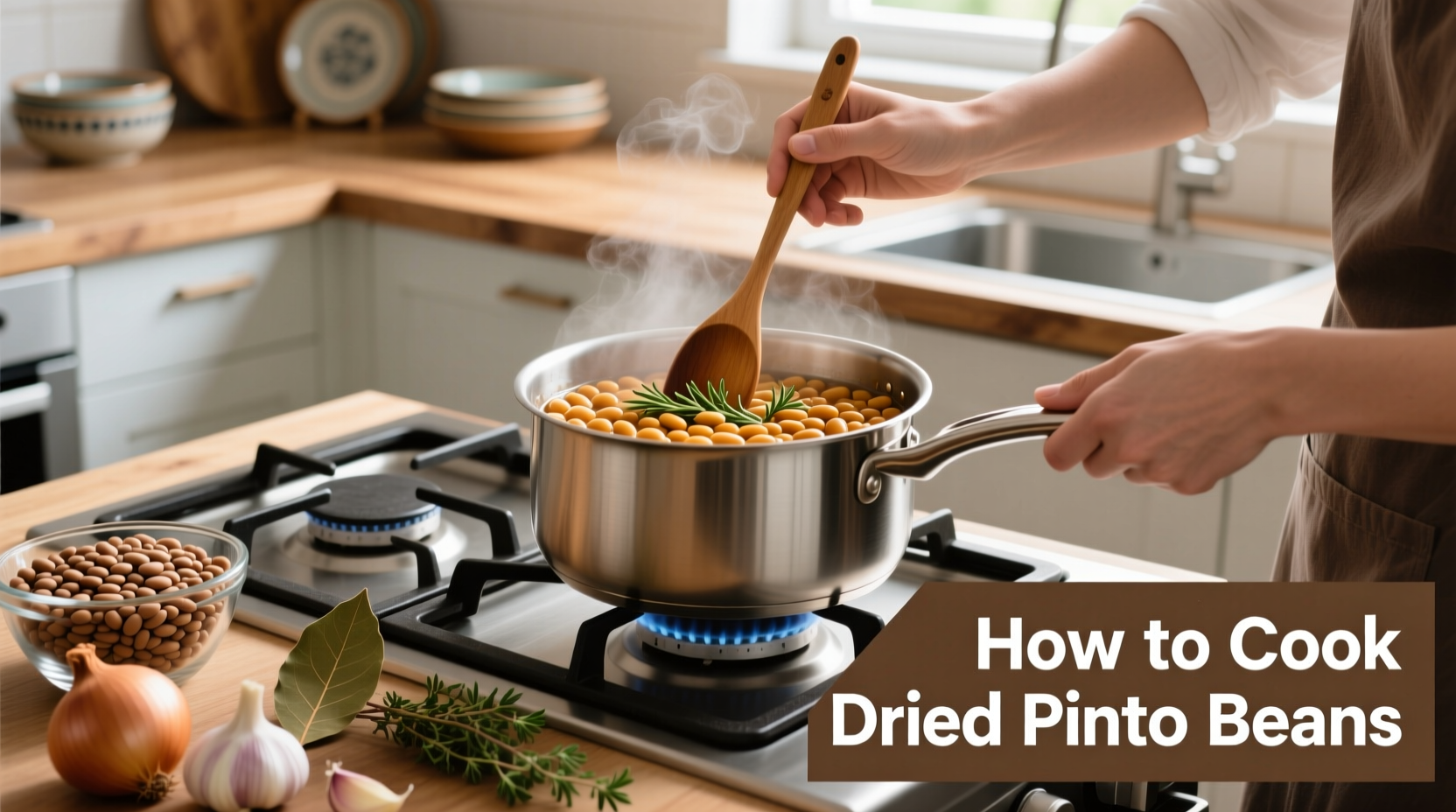Perfectly cooked dried pinto beans require sorting, rinsing, optional soaking, and simmering for 1-2 hours until tender. For best results, use a 3:1 water-to-bean ratio, add salt midway through cooking, and include aromatics like onions and garlic for enhanced flavor without compromising texture.
Nothing beats the creamy texture and earthy flavor of homemade pinto beans compared to their canned counterparts. Whether you're preparing traditional refried beans, hearty chili, or a simple side dish, mastering dried pinto bean preparation unlocks superior taste, texture control, and cost savings. This comprehensive guide reveals professional techniques for consistently perfect results every time.
Essential Preparation: Sorting and Rinsing Your Beans
Before cooking, proper preparation ensures clean, evenly cooked beans. Spread dried pinto beans on a light-colored surface to inspect for debris, shriveled beans, or small stones. This simple visual inspection step prevents unpleasant surprises during cooking. Then rinse beans thoroughly in a colander under cold running water, removing any dust or impurities.
| Preparation Method | Time Required | Water-to-Bean Ratio | Resulting Texture |
|---|---|---|---|
| No-soak method | 1.5-2 hours cooking | 4:1 | Firm but tender |
| Overnight soak | 8-12 hours + 1 hour cooking | 3:1 | Creamy and uniform |
| Quick hot soak | 1 hour + 45 min cooking | 3:1 | Evenly tender |
Mastering the Cooking Process
While soaking reduces cooking time and improves digestibility, it's not mandatory. The USDA National Nutrient Database confirms that both soaked and unsoaked beans deliver identical nutritional profiles when properly cooked. For the stovetop method, combine 1 cup sorted beans with 3 cups fresh water or broth in a heavy pot. Bring to a gentle boil, then reduce heat to maintain a bare simmer.

Key Cooking Timeline Milestones
- 0-15 minutes: Initial boil with foam skimming - remove any white foam that rises to the surface
- 30 minutes: First texture check - beans should be slightly softened but still firm
- 45-60 minutes: Salt addition point - adding salt now improves texture and flavor absorption
- 75-90 minutes: Doneness check - beans should be creamy inside with intact skins
Flavor Enhancement Techniques
Timing your seasoning additions dramatically affects results. Contrary to popular belief, adding salt early doesn't prevent beans from softening - this myth was debunked by America's Test Kitchen after extensive testing. For optimal flavor, add 1 teaspoon of salt per cup of dried beans when beans are halfway cooked. Include aromatics like onion, garlic, and bay leaves during the last 30 minutes to prevent bitterness.
Avoid adding acidic ingredients like tomatoes or vinegar until beans are fully tender, as acidity slows the softening process. For authentic Latin American flavor profiles, Maya Gonzalez recommends adding a strip of kombu seaweed during cooking - this traditional technique enhances digestibility while imparting subtle umami notes.
Troubleshooting Common Bean Problems
Hard beans after extended cooking? This typically indicates either very old beans (check expiration dates) or hard water interference. The University of Nebraska Food Science Department confirms that water with high mineral content can inhibit softening. Solution: Add 1/8 teaspoon baking soda to the cooking water to neutralize hardness.
Split or burst beans? Rapid temperature changes cause this issue. Always start beans in cold water and bring to a simmer gradually. Maintain a gentle simmer rather than a rolling boil for intact bean structure.
Storage and Usage Guidelines
Properly cooled cooked pinto beans maintain quality for 5 days refrigerated or up to 6 months frozen. Cool beans in their cooking liquid before storage to preserve moisture and flavor. When freezing, portion beans in 1.5 cup containers (equivalent to a standard can) for recipe convenience.
For immediate use, incorporate cooked pinto beans into these versatile dishes:
- Classic refried beans (mash with reserved cooking liquid)
- Southwestern salads with corn and avocado
- Hearty vegetarian chili base
- Creamy bean dips with roasted garlic
Frequently Asked Questions
Can I cook dried pinto beans without soaking?
Yes, you can cook dried pinto beans without soaking. The no-soak method requires 1.5-2 hours of simmering with a 4:1 water-to-bean ratio. While soaking reduces cooking time by about 30%, skipping this step won't compromise safety or nutritional value when beans are properly cooked until tender.
Why do my pinto beans stay hard even after long cooking?
Hard beans typically result from using expired beans, hard water interference, or acidic ingredients added too early. Beans older than 12 months lose moisture and become difficult to soften. To fix hard water issues, add 1/8 teaspoon baking soda to the cooking water. Always add acidic ingredients like tomatoes after beans have fully softened.
When should I add salt when cooking dried beans?
Add salt when beans are halfway cooked (about 45 minutes into simmering). Research from Cook's Illustrated confirms that salt added at this stage actually improves texture by strengthening bean skins while allowing proper flavor absorption, debunking the myth that early salt addition prevents softening.
How can I reduce gas caused by eating beans?
To minimize digestive discomfort, change the soaking water at least once, discard soaking water before cooking, and add epazote or kombu seaweed during cooking. The Mayo Clinic notes that gradually increasing bean consumption allows your digestive system to adapt, reducing gas production over time.
What's the fastest way to cook dried pinto beans?
The pressure cooker method is fastest, requiring just 25-30 minutes of active cooking time. After a quick 1-hour hot soak, use 1.5 cups water per cup of beans and cook at high pressure for 25 minutes, followed by a 15-minute natural release. This technique yields perfectly tender beans in under an hour total time.











 浙公网安备
33010002000092号
浙公网安备
33010002000092号 浙B2-20120091-4
浙B2-20120091-4